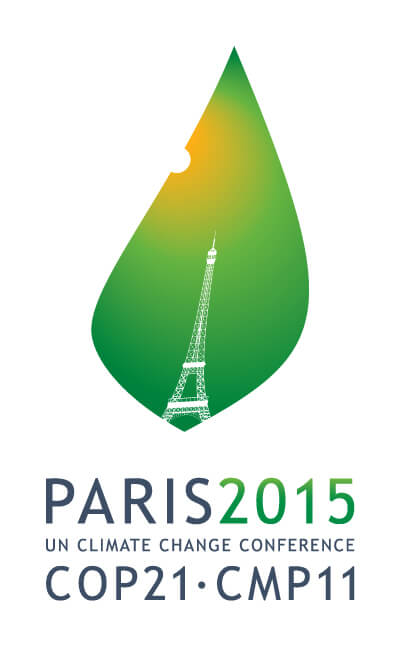Despite some promising developments, the need for action
has grown even more urgent
This is the first anniversary of „The scientists’ warning about the Climate Emergency”. The climate emergency has arrived and is accelerating more rapidly than most scientists anticipated, and many of them are deeply concerned. The adverse effects of climate change are much more severe than expected, and now threaten both the biosphere and humanity.
Horses panic as a wildfire approaches near Canberra, Australia in February of 2020. Credit: Getty Images
Scientists now find that catastrophic climate change could render a significant portion of the Earth uninhabitable consequent to continued high emissions, self-reinforcing climate feedback loops and looming tipping points.
Although lockdowns associated with the COVID-19 pandemic resulted in a decrease in CO2 emissions of 7 percent in 2020, this reduction is unlikely to be long-lived because there has been no major concurrent shift in the way we produce energy.
It’s concerning that no major industrialized country is on track to limit warming to 1.5 degrees C, the target of the Paris Agreement. Instead, the actions of many wealthy countries—including the U.S. —are consistent with greater than three degrees C warming (which would be catastrophic).
To date, 1,859 jurisdictions in 33 countries have issued climate emergency declarations covering more than 820 million people.
In January 2020, we warned of untold human suffering in a report titled World Scientists’ Warning of a Climate Emergency with more than 11,000 scientist signatories from 153 countries at time of publication. As an Alliance of World Scientists, we continue to collect signatures from scientists, with now more than 13,700 signatories. In our paper, we presented graphs showing vital signs of very troubling climate change trends with little progress by humanity. Based on these trends and scientists’ moral obligation to
„clearly warn humanity of any catastrophic threat”
and to
„tell it like it is”
we declared a climate emergency and proposed policy suggestions. We called for transformative change with six steps involving energy, short-lived air pollutants, nature, food, economy and population. A short video discussion by thought leaders on the six steps is now available (see below).
As we move into 2021 and beyond, we need a massive-scale mobilization to address the climate crisis, including much more progress on the six steps of climate change mitigation. Key actions for each step include the following:
1. Energy. Swiftly phasing out fossil fuels is a top priority. This can be achieved through a multipronged strategy based on rapidly transitioning to low-carbon renewables such as solar and wind power, implementing massive conservation practices, and imposing carbon fees high enough to curtail the use of fossil fuels.
2. Short–lived pollutants. Quickly cutting emissions of methane, black carbon (soot), hydrofluorocarbons and other short-lived climate pollutants is vital. It can dramatically reduce the short-term rate of warming, which may otherwise be difficult to affect. Specific actions to address short-lived pollutants include reducing methane emissions from landfills and the energy sector (methane), promoting improved clean cookstoves (soot) and developing better refrigerant options and management (hydrofluorocarbons).
3. Nature. We must restore and protect natural ecosystems such as forests, mangroves, wetlands and grasslands, allowing these ecosystems to reach their ecological potential for sequestering carbon dioxide. The logging of the Amazon, tropical forests in Southeast Asia, and other rainforests including the proposed cutting in the Tongass National Forest of Alaska is especially devastating to the climate. Creation of new protected areas, including strategic forest carbon reserves, should be a top priority. Payment for ecosystem services programs offer an equitable way for wealthier nations to help protect natural ecosystems.
4. Food. A dietary shift toward eating more plant-based foods and consuming fewer animal products, especially beef, would significantly reduce emissions of methane and other greenhouse gases. It would also free up agricultural lands for growing human food and, potentially, reforestation (“Nature” step). Relevant policy actions include minimizing tillage to maximize soil carbon, cutting livestock subsidies and supporting research and development of environmentally friendly meat substitutes. Reducing food waste is also critical, given that at least one third of all food produced is wasted.
5. Economy. We must transition to a carbon-free economy that reflects our dependence on the biosphere. Exploitation of ecosystems for profit absolutely must be halted for long-term sustainability. While this is a broad, holistic step involving ecological economics, there are specific actions that support this transition. Examples include cutting subsidies to and divesting from the fossil fuel industry.
6. Population. The global human population, growing by more than 200,000 people per day, must be stabilized and gradually reduced using approaches that ensure social and economic justice such as supporting education for all girls and women, and increasing the availability of voluntary family planning services. (Human Rights approach)
Dependencies and synergies
It’s worth pointing out that the order of the 6 above mentioned steps are the following:
-
-
-
- Population
- Food
- Nature
- Economy
- Energy
- Short-lived pollutants
-
-
for the reasons detailed below.
These steps synergize with each other and together ensure a sustainable future. They also have many co-benefits beyond climate mitigation. For example, stabilizing human population size can improve climate adaptation capacity in the event of declining crop yields. Similarly, plant-rich diets offer significant benefits for human health.
Moreover, the above steps actually depend on each other in a specific order. In other words, without making one step, all the efforts connected to the following steps are ineffectual, and the goals become unattainable.
Challenges and difficulties
Concerning the second step (Food), we can see that in the developing countries, per capita meat consumption is actually on the rise. As for the third one, one might be concerned that the (economic and political) powers that be have no interest in changing the systems that serve them well.
When it comes to the fifth one, we shouldn’t forget that renewable energy is predominantly suitable for electricity production, which is about 15% of all energy use. And that when considering net energy, analyses show that renewables coupled with storage capacities are incapable of running a modern civilization, which is also shown by them not being economical. Introducing a carbon tax would probably be effective in reducing emissions, but it would have similar economic effects, that is, higher energy prices, and thus, higher prices overall.
We have two paths ahead
Our civilization either changes beyond recognition to reach sustainability, or it collapses. Either way, in a few decades, this civilization as we know it will be no more. So we need to prepare for dramatic changes.
Who trusts the UN to succeed in convincing the current economic and political leaders to give up their financial and political aspirations for the sake of reaching sustainability, and the everyday people to accept that they have to lead a simpler life, starting the change with themselves.
Calculate your own ecological footprint, and during some experimentation with a dedicated footprint calculator, find that lifestyle with which you can squeeze it under 1,6 gha (Or rather, under 1,0 gha, because the ecological footprint is too optimistic even according to its creators – Mathis Wackernagel, Bert Beyers: Ecological Footprint, 2019)
If you cannot succeed in doing so, or you are skeptical about humanity becoming sustainable, it’s wise to start preparing for a civilizational collapse (e.g. a big garden, learning survival strategies, organizing local communities, founding nonprofit community supported companies, creating full reserve local money, etc.).
In December 2020, U.N. Secretary-General Antonio Guterres pleaded for every nation to declare a “climate emergency.” Thus, we call for the Hungarian government to proclaim a climate emergency with the parliament passing major climate mitigation funding and a declaration of a climate emergency, making it a priority.
One year ago, we were troubled about poor progress on mitigating climate change. We are now alarmed by the failure of sufficient progress during 2020. The Hungarian government has buried the proposal to declare a climate emergency in 2020, and instead, it declared an action plan that promises economic growth.
However, there are glimmers of hope. Young people in more than 3,500 locations continued global climate strikes calling for urgent action. The Black Lives Matter movement has brought deep social injustice and inequality to the surface of our social and economic systems. Rapid progress in each of the six steps can be achieved when they are framed from the start in the context of climate justice, as climate change is a deeply moral issue. But this is only possible when those who face the greatest climate risks help shape the response, including Indigenous peoples, women, youth, people of color and low-income people. Aggressive transformative change, if framed holistically and equitably, will accelerate broad-based restorative action and avert the worst of the climate emergency. The survival of our society as we know it depends upon this unprecedented change.
Rampasek, László A.
Source: William J. Ripple, Christopher Wolf, Thomas M. Newsome, Phoebe Barnard, William R. Moomaw 2021. January 6.















